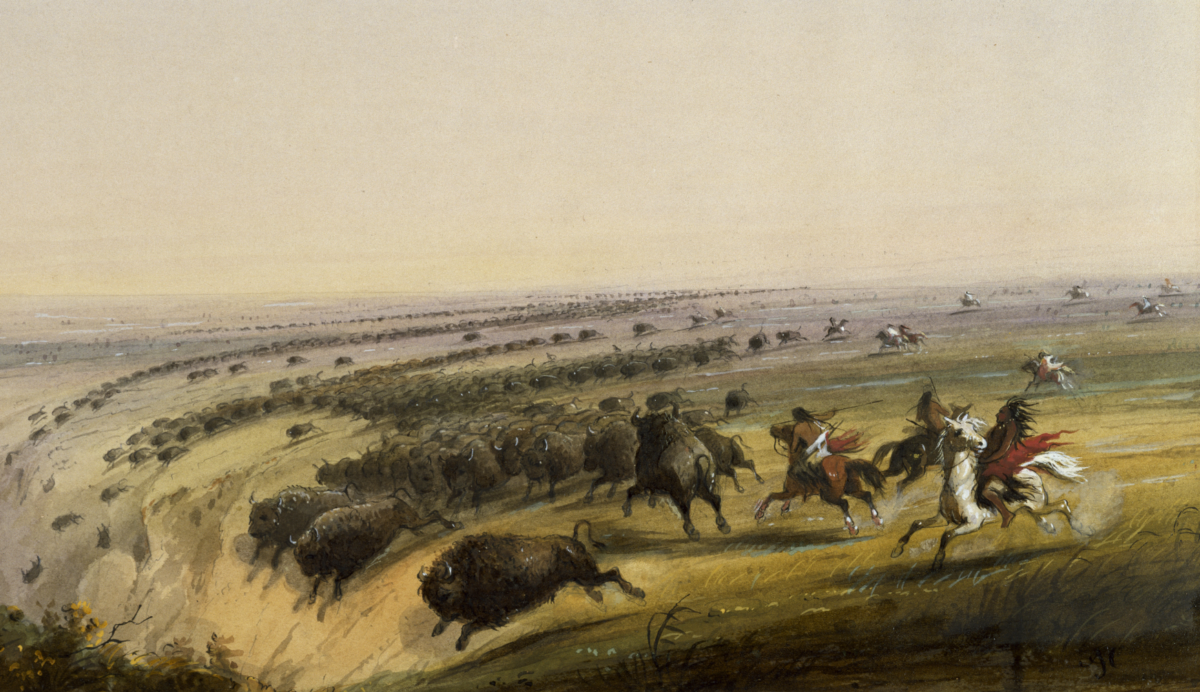William Frederick “Buffalo Bill” Cody earned his moniker as a hunter in 1867–68 culling more than 4,000 bison to supply meat to Kansas Pacific Railroad construction crews. Much ink has been spilled about the effect of market hunters armed with large-caliber rifles on buffalo populations out West, but people tend to forget that Plains Indians had perfected the mass killing of what today is the U.S. national mammal.
Untold millions of bison are thought to have roamed the North American plains before the first humans even set foot on the continent, and they evolved traits and instincts that served them well against such traditional predators as wolves or bears. Clever humans, though, learned how to exploit the buffalos’ instincts. For example, a herd’s stampede instincts might save it from a pack of wolves, but humans with fire or other means of spooking bison could lead them onto thin ice or off a cliff with minimal effort.
For decades, archaeologists have studied the sites of such mass killings, known as “buffalo kills” or “buffalo jumps.” Their discoveries provide fascinating insights into the lives of the first Americans. One example of grazeland managed by ranchers Dean and Candice Lockner in the Ree Hills of South Dakota has been radiocarbon dated to the 12th or 13th century, hundreds of years before Columbus arrived in the New World.
Onsite and nearby archaeologists have found projectile points and evidence of organized butchery, including a bone grease processing station. Taken as a whole, the evidence suggests the society that used the kill site was distinct from the Plains Indians encountered centuries later by Europeans because hunting methods in the Americas by then had drastically changed with the reintroduction of the horse.
In 2023 the Ree Hills buffalo kill site was added to the National Register of Historic Places. Wild West contributor Lance Nixon will share more about the site in a future Indian Life article.





